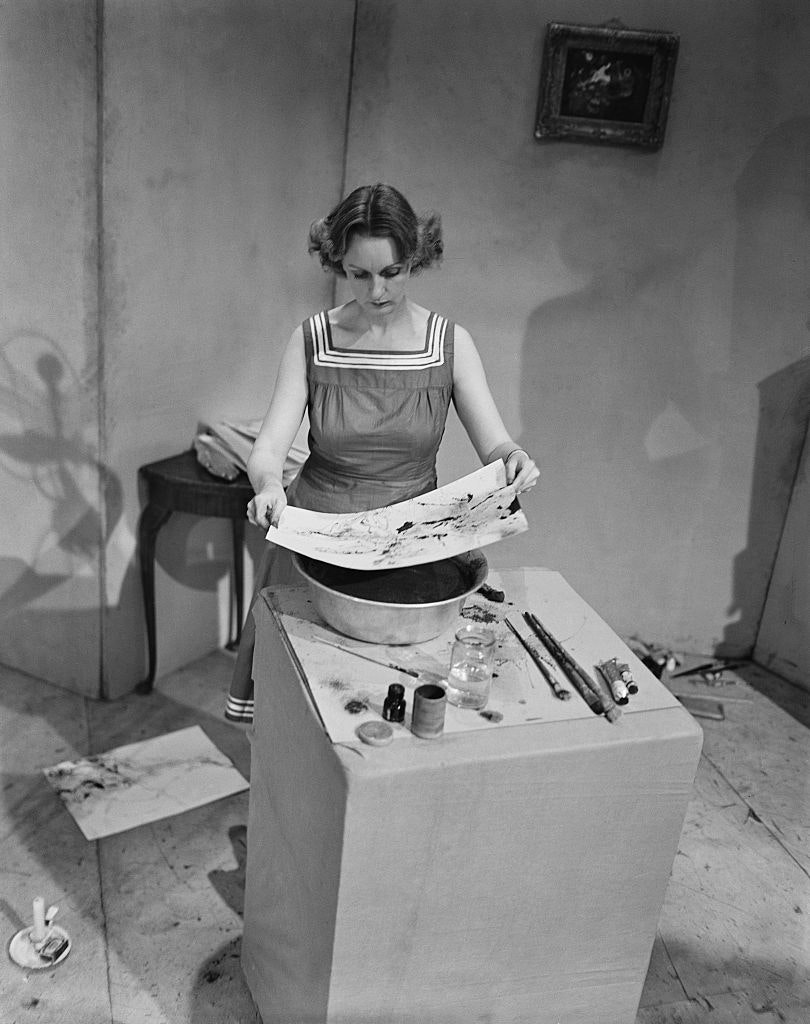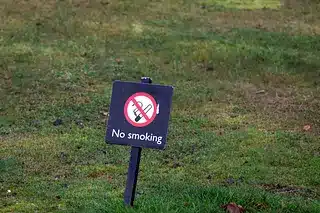Fantastical creatures thrown up from the earth emerge in the landscapes of both Edward Burra (1905-1976) and Ithell Colquhoun (1906-1988). For the former, a leafy nymph stretches out across a brooding landscape, flanked by a devilish birdman who plays a medieval-looking instrument. Femininity is explored in the chthonic works of Colquhoun, whose figures are empowered by natural forces: tectonic, cyclical, or otherwise.
When asked about the meaning of his surreal landscapes, Burra would evade the question by providing this pithy response: “Call in a psychiatrist.” Refusal of concrete meaning is characteristic of the surrealist flare that unites these two separate shows, accessed via a single ticket purchase. Latency does not belittle the confidence of curators at Tate Britain to interpret historical work to meet contemporary urgencies; in Burra’s case, environmental disaster maps onto their own institutional goal to address the climate emergency.
Surrealism for Burra begins in his satirical exploration of the roaring twenties, known as “the crazy years” in France where he spent much of the decade. Hedonism was rife in a culture bursting with opportunities for the moneyed. Balcony, Toulon (1929) depicts the glamorous young and wealthy, who actively embrace a bohemian lifestyle. Their misleading appearance is mirrored in the side-eye glance of the foreground figure, whose gaze falls upon the heavily made-up face of a woman.
Grotesque women can be found in many of Burra’s early works. The Two Sisters (1929) shows the professional entertainers known as the Dolly Sisters in their vulgar glory. Two flat faces, mouths drooped in grimace, and skin caked with rouge and blue eyeshadow. Jewelled necklaces sit obtuse above bare breasts, nipples pointing outwards beside the frill of their matching gowns. Ugly wealth is framed by plush fabrics. More elegant is the male server, whose profile and clothing are classically simple.
Burra’s immersion in social life is apparent in his ability to capture plethoric personalities. Men and women enliven the new urban spaces — music halls, bars, and cafes — in a hodgepodge of social classes, muddied by money and consumerism. Colourful personalities continue in his American work during the 1930s and 1950s, but these vary dramatically in quality. Harlem (1934) successfully captures a daytime street scene in New York. Each resident daydreaming, smoking, reading, or chatting, against the backdrop railway bridge.
Rhythm is literally injected throughout the exhibition via music. Burra’s vinyl collection is displayed, whilst the likes of Louis Armstrong, Billie Holiday, and Ella Fitzgerald provide phonic fodder to nourish the Harlem Renaissance. However — and similarly in the case of his treatment of war — most of the resultant paintings are unconvincing. Whereas Goya portrayed the horrors of the Spanish Civil War in cutting contrasts of tar black and viscous red, the vibrant paintings of Burra fall flat.
Landscapes conclude the exhibition on a high note. Quintessential Englishness is patterned in lyrical topography, enlivening the landscapes that inspired the fantasy worlds of Tolkien and Doctor Who. Scarecrows are a menacing motif in some works — a subject that continued to fascinate artists throughout the century, such as the pastoral uncanny photographs of Peter Mitchell (b.1943) and Homer Sykes (b.1949). Some paintings lament the impact of industry on the British countryside. If Lowry captured factory workers as automatons, Burra did so through the iconography of death. Skeleton Party (c.1952-4) depicts a group of skeletons dressed in flamboyant golden and coral hats; in the background, grey miners camouflage into industrial grime.
Disability is meant to be a shaping force on Burra’s career. Descriptions provide insight into his artistic practice, but these are marred by tokenistic crumbs – one postulates that his experience of disability “may have informed his portrayal of marginalised communities”. The regurgitation of institutional buzzwords detracts from the research. Identity is more developed as a shaping force in Ithell Colquhoun, through her mystic understanding of sexuality and gender.
Colquhoun’s training in life drawing at the Slade School of Fine Art provides initial context for the mystical works that constitute the exhibition mainstay. Her rendering of Biblical subject matter puts her in conversation with contemporaries such as Stanley Spencer (1891-1959) and Louisa Hodgson (1905-1980), wherein biblical stories are recast in present-day settings. Characters dressed in modern clothes — rust-orange and watery blue suits — gather around an iron bedframe in Death of the Virgin (1931). The protagonist, a withering Mary, collapses under buttery sheets.

Surrealism emerges in Colquhoun’s plant paintings. Meaning shifts away from classical narrative to be postulated beneath the surface, often of a sexual nature. History is recreated via the gathering of works originally shown at the Mayor Gallery in 1939. Made aware of this curatorial context, one can consider contemporary reception to works that imply masculine impotence. Gouffres Amers (méditerranée) (1939) depicts a skeletal man, outstretched in a rocky terrain. His genitals are a flaccid flower-like form, communicating the same message of Cucumber (1939) — a sliced vegetable protruding erect from a glass jar. Male impotence contrasts to and reinforces feminine power represented elsewhere in flora and landscape.
Pictorial narrative completely unfurls in works produced with automatic techniques. Her sketches made without “conscious planning” — such as Rock Pool (c.1947) — are eye-catching versions of doodles that emerge absentmindedly in school workbooks, rather than convincing explorations of the human psyche. Similarly, her sets of tarot cards (or “Taro”, as insisted by Colquhoun) are aesthetically captivating: thick paint sits like molten silver, flanked by drops of primary yellow and morphing greens.
Gender is explored in the union of masculine and feminine sexual energies. Alchemical Figure: Androgyne (1941) slices together two figures — one blue, one pink — to form a central transcendental being. Her artistic exploration of Celtic monuments and folk tradition in the ancient Cornish landscape provides the most captivating story of psychic energy. Dance of the Nine Opals (1942) shows an arrangement of oyster-like forms, each a pocket of feminine energy. Vivid colours swirl like paint within their bellies as they dance to an earthly cycle, connected via tensile lines to a central podium.
The deep dive into the mystic practice of Colquhoun represents the study of archival materials after their transference from the National Trust to the Tate in 2019, and for this the curatorial research is admirable. Nevertheless, I left unconvinced by the automatic techniques used by Colquhoun and her forays into occultism. Rather, the exhibition’s double-dose illuminates the idiosyncratic nature of twentieth-century British art.












